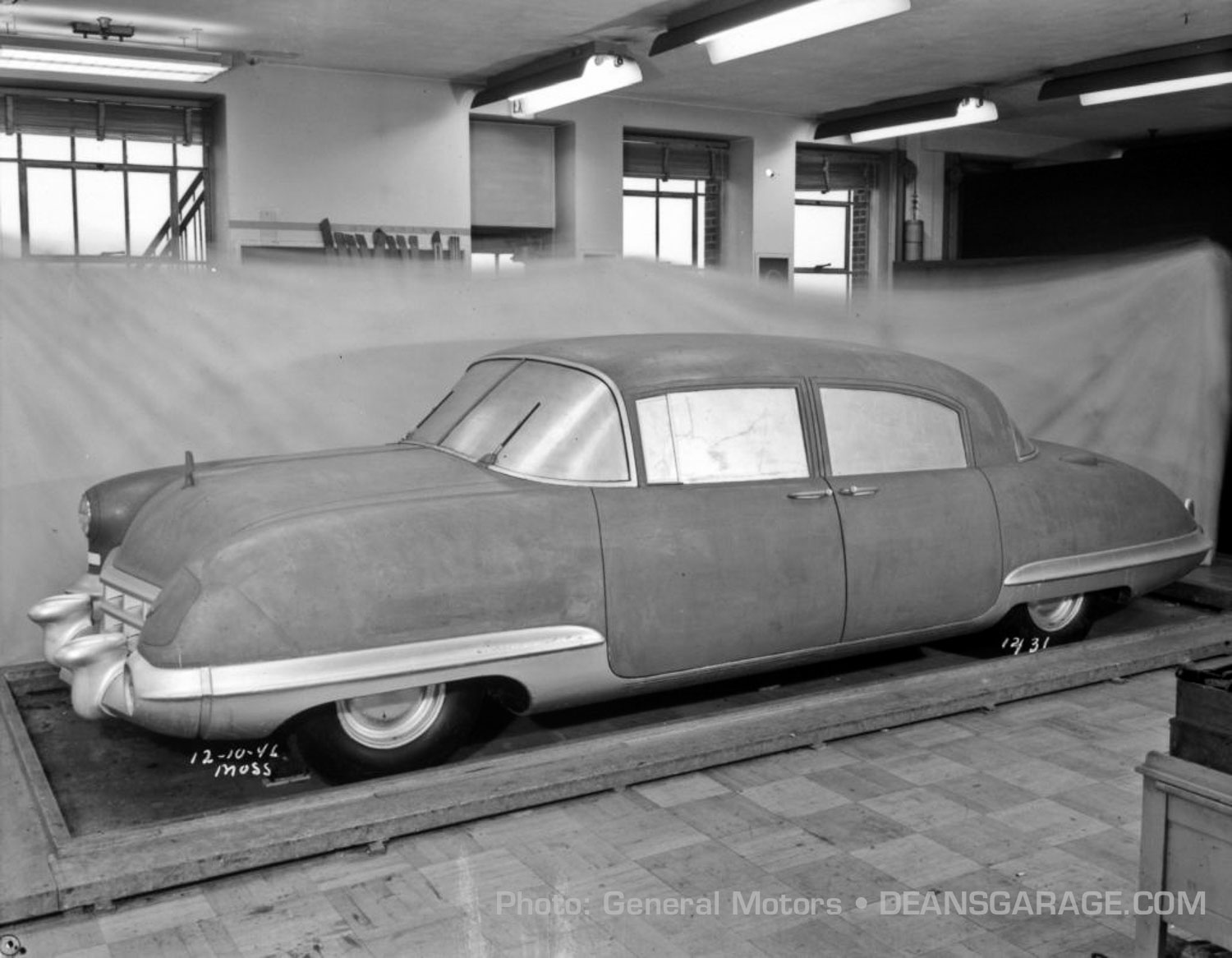
1946 Cadillac Concept Car Becomes Crash Test Dummy
By David Burrell (automotive writer and founder of Retroautos®)
Photos copyright: General Motors.
The 1946 Cadillac C.O., aka the Interceptor, was one of General Motors’ (GM) most intriguing post World War II concept cars. Few people ever saw it and it ended its existence in 1957 as a crash test dummy.
The CO/Interceptor was styled at the end of the WWII by Frank Hershey. Its shape was based on airplane design motifs. According to Michael Lamm and David Holls in their book A Century of Automotive Style its “rounded pudgy forms, wrap around glass and bumpers”, along with fully enclosed front wheels, was what “all designers of that era—not just those at GM—thought cars of the future would look.”
In 1946 GM built an operational CO/Interceptor prototype. (some sources claim two were built) for testing GM’s Milford Proving Grounds. The CO/Interceptor was also used in a filmed comparison with 1946, 1947 and 1948 Cadillacs and a 1948 Hudson Commodore.
But its shape was a problem. GM’s styling boss, Harley Earl, and Cadillac executives, thought it was too radical and too far ahead of public tastes for the times. In C. Edson Armi’s book, The Art of American Car Design: The Profession and Personalities, Bill Michell, Earl’s successor, offered additional insights. He said that Earl got tired of the CO/Interceptor’s fat look. Earl is reported to have said “to hell with that big blown-up thing”. The cover of Armi’s book shows a rendering of the CO/Interceptor.
It is fascinating to speculate what 1950s cars might have looked like if Earl had persisted with the design theme of CO/Interceptor. A glimpse is offered by the Nashs of the late 1940s and early 1950s.The 1949 Nash Airflyte is almost a carbon copy of the CO/Interceptor, save for the lack of a wrapped glass. In the end it was a design path not followed, though elements of the rounded forms did pervade Harley Earl’s early 1950s offerings.
For many years mystery surrounded what happened to the CO/Interceptor. There were scant photos of it. Indeed, its existence had gained almost mythical status. However, with the help of GM Heritage archivist John Kyros, we uncovered the CO/ Interceptor’s fate.
A search of GM’s archives unearthed photos of the car being used to “test” a wraparound windscreen and badged as a Pontiac, with what looks like a 1955 Pontiac hood. There was also a priceless photo of the car’s dashboard. It showed mileage of 2096.
And then there was the photographic evidence of the CO/Interceptor’s demise. Two colour images, from 1957, reveal it being used as a crash test dummy. A 1957 Chevrolet Bel Air was sent at high speed into its right-hand side. There are no documents explaining the reason for the test.
That is how one of GM’s most intriguing concept cars ended its days.

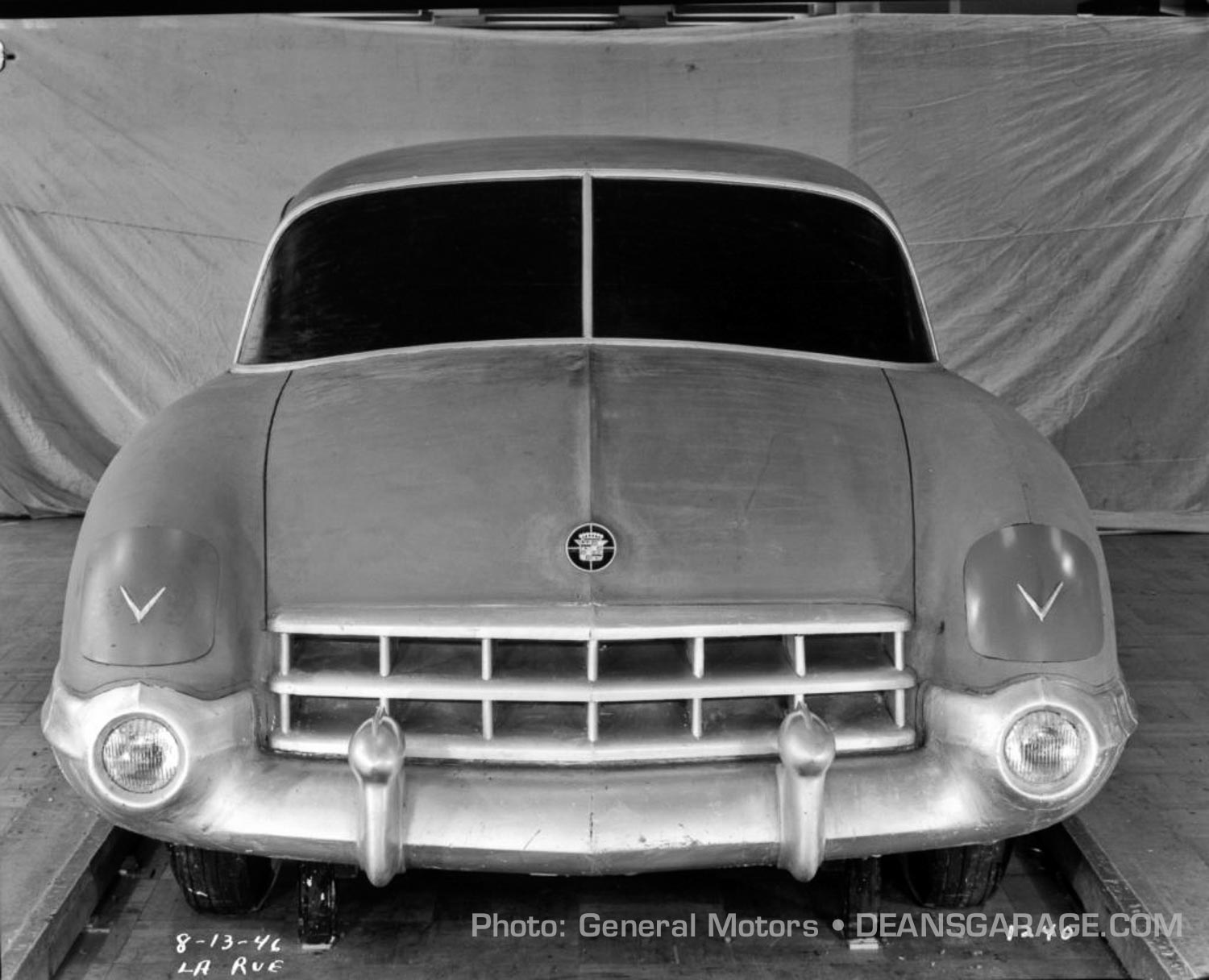
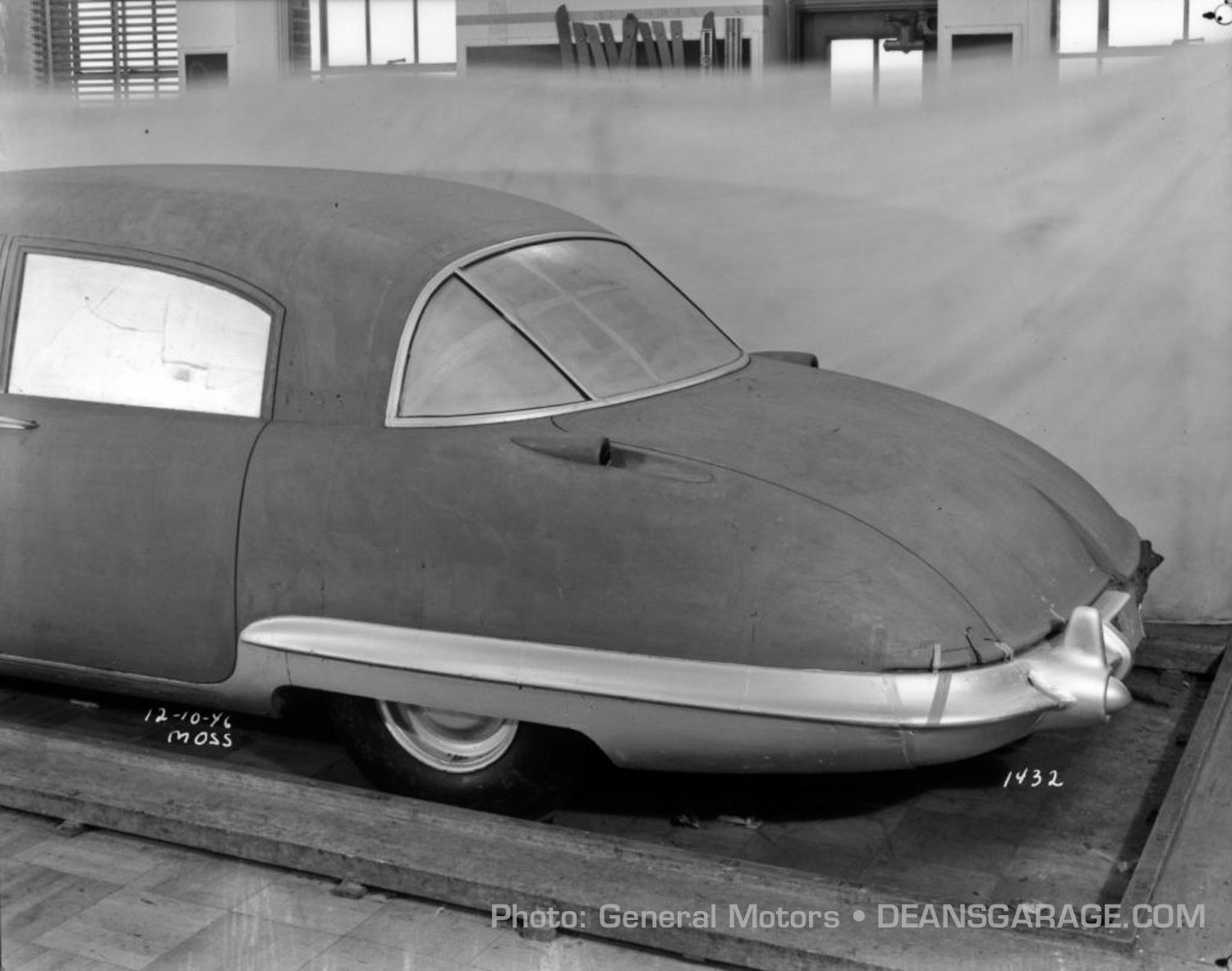
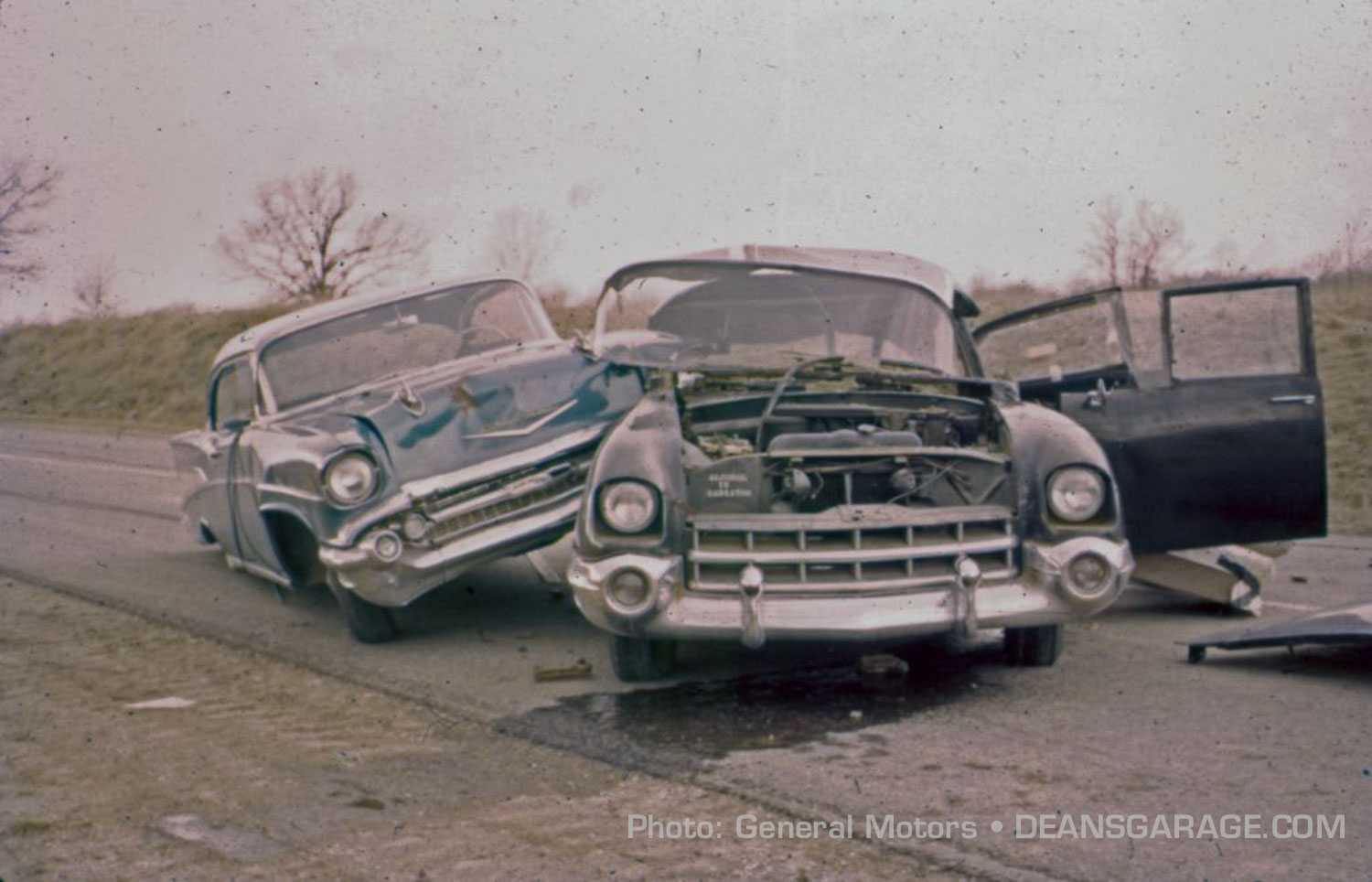
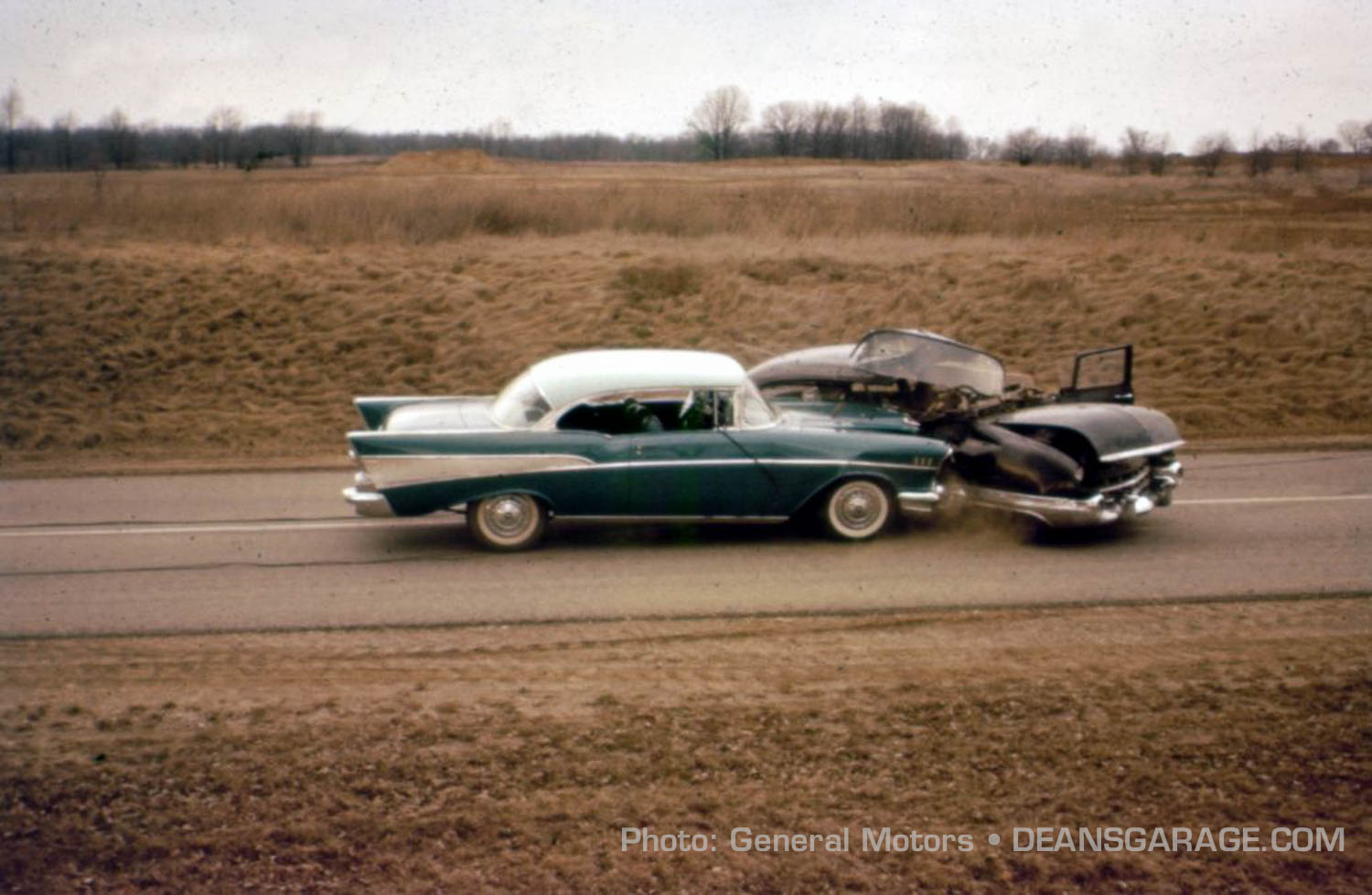
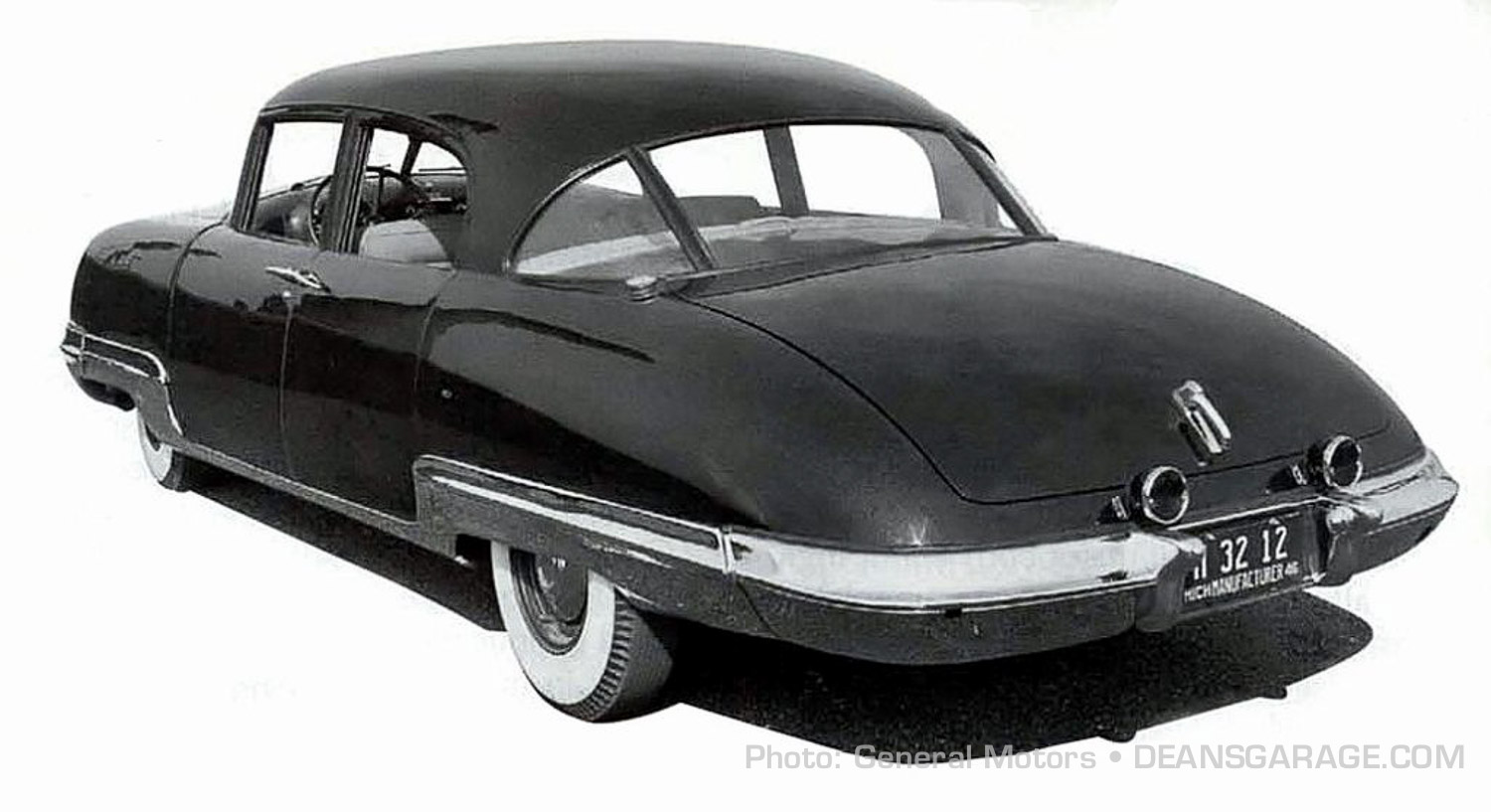
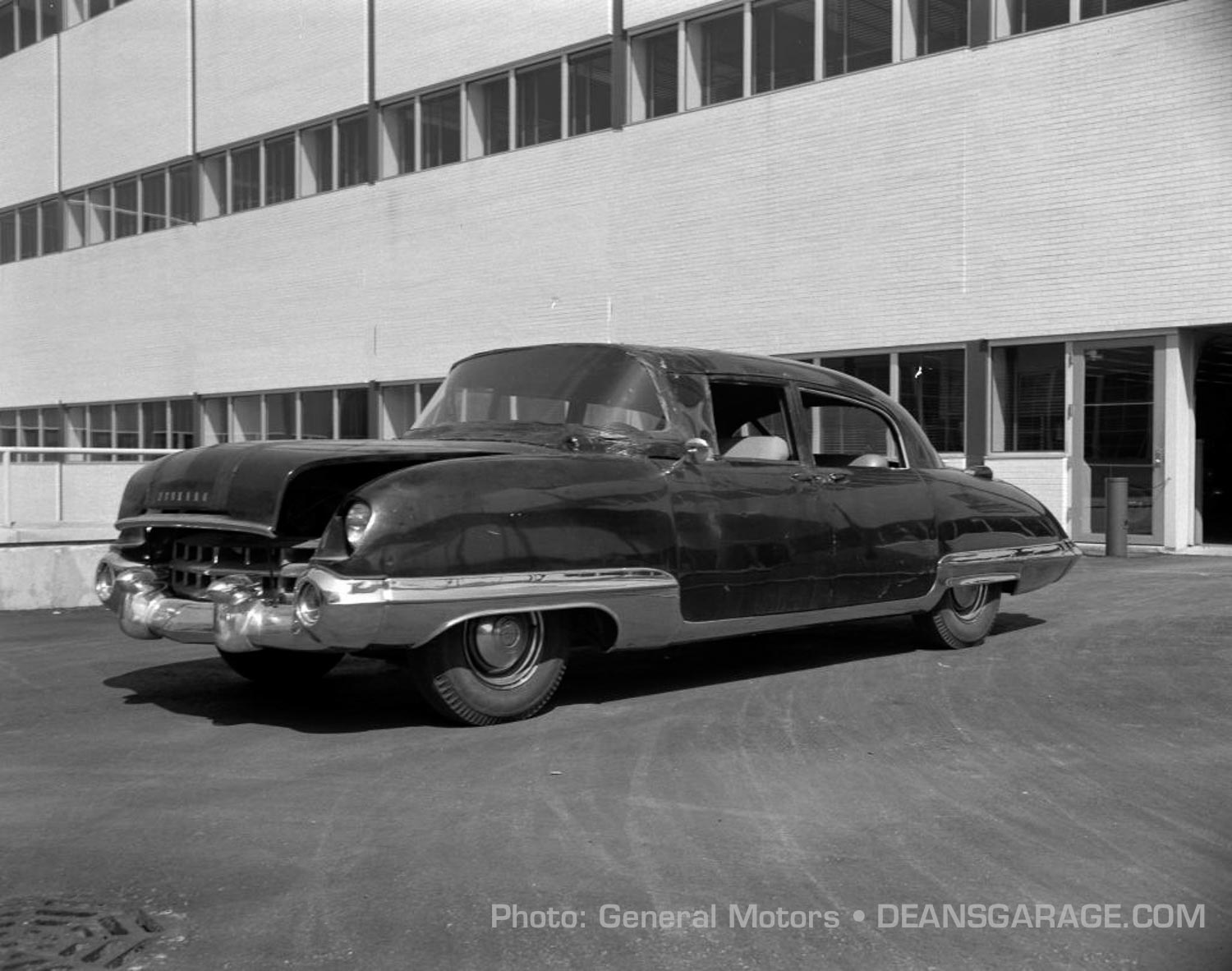
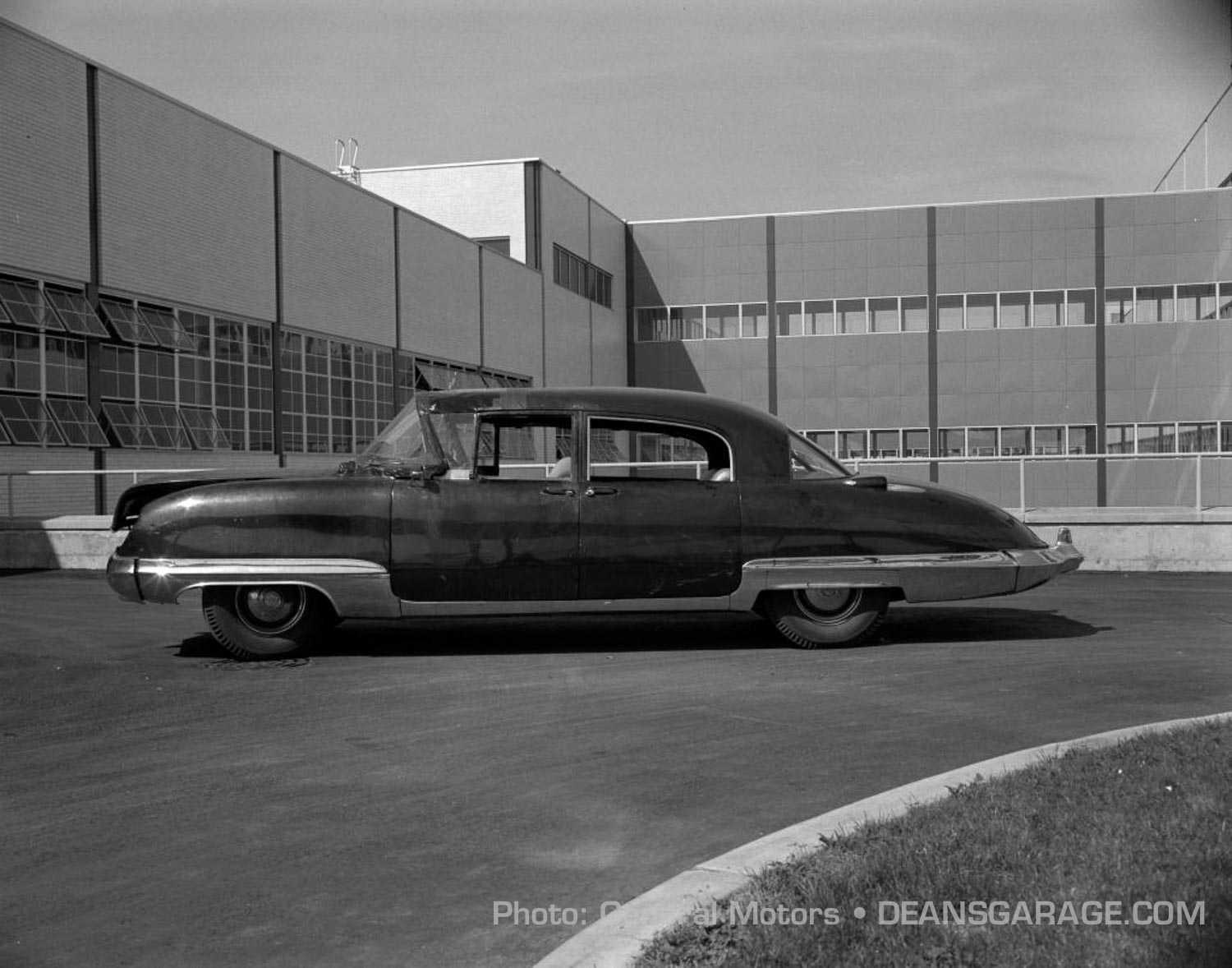
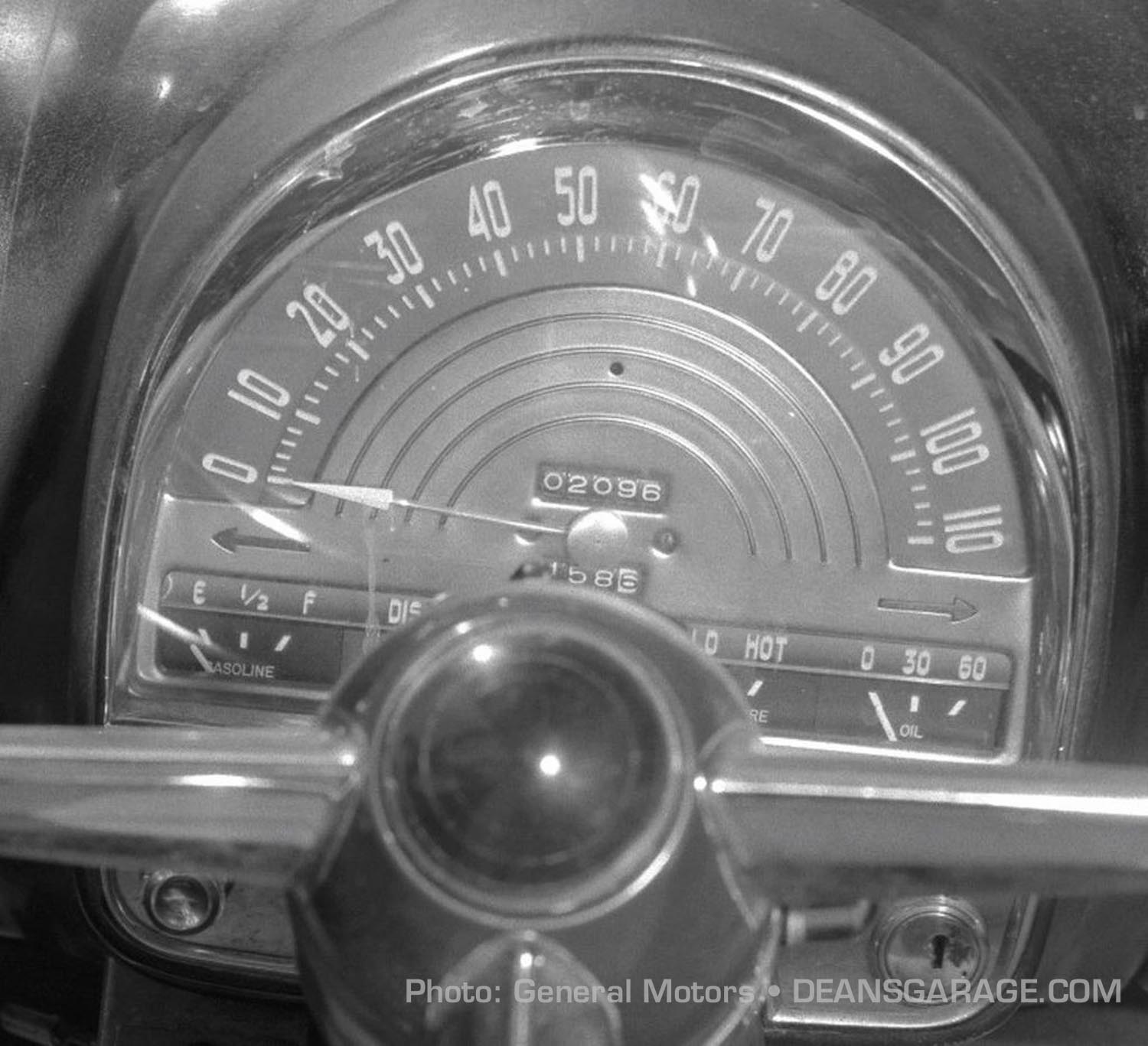
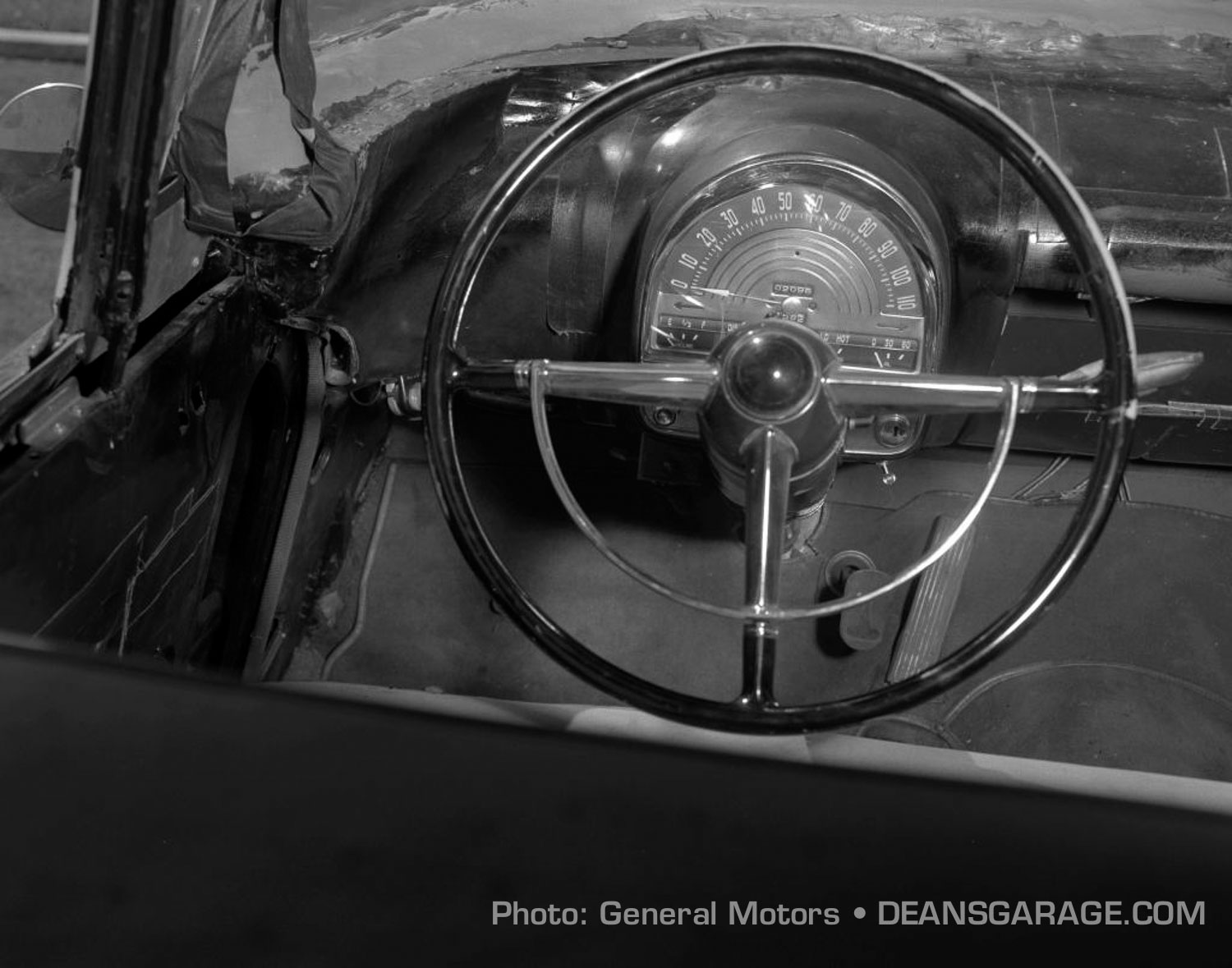
Awesome!!
Viewing the car objectively from a 1946 standpoint, I can understand how it generated styling appeal among its fans and followers.
That beautiful Harbor Blue ’57 Bel Air had hit a lot of cars before kissing the Interceptor goodbye.
I’m reminded of a similar crash when Ford ran a prototype ’53 Skyliner into a ’55 Town Sedan.
Like everything, another great review.
It’s interesting that you can see some design elements that appear later on Cadillacs. The front grill for example. It also looks like it had hidden headlights that probably rolled over.
The upper also had some qualities that remind me of some of the cars in the early 50s. Side, glass rear pillar and backlight. Harley Earl was very experimental and it’s interesting that he got tired of it. But I think the problem with it was that it really didn’t have a strong Divisional identity as what was being developed for the Motorama Cars. I think you could’ve taken it and done that and made it fairly successful.
Harley Earl was right: too bulbous. Like the period Packards and Lincolns, and even the Mercury to some extent. The 3/4-front view of the clay model shows a standard headlight on the RF fender, for comparison. The ’57 Chevy must have been remote-controlled–there’s a cable on the passenger door, and the side photo was taken right at impact.
Compared to the ’49 Cadillac we did get, I’d say Earl made the right choice. I get that sometimes you get an idea you think is brilliant at first, but the more you look at it, the more you wonder what you were thinking. It looks almost like a Jaguar sedan from some angles, and that back end was copied almost verbatim on the ’57 Eldorado.
The instrument cluster appears to be line for line exactly what went into the ‘48 Cadillacs.
Dick Ruzzin notes carryover of certain design cues from this car to production Cadillacs – let me add another: the chrome lower trim that made the whole car look like it was resting on a chromed base. This got used for many years after on high end Cadillacs. You paid up for the deluxe model, you got a lot of chrome down low.